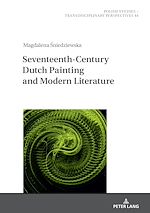
The book is an attempt at a monographic approach to the problem of the reception of 17th-century Dutch painting in modern literature. However, the author deals not only with contemporary works but also with the texts of 19th-century writers and critics, most often French, who shaped the so-called myth of the Dutch Golden Age. Readers learn the historically conditioned models of perception of 17th-century Dutch painting. The original achievement is the genre key, which is a consequence of the thesis on the mediation of the 20th-century reception of Dutch Golden Age painting in 19th-century European literature and art criticism. Contemporary writers are revising the concept of realism; they cannot talk about Vermeer’s View of Delft without referring to Proust’s petit pan de mur jaune. They read still lifes through Chardin and Cézanne or revive the myth of Rembrandt – a self-portraitist who analyzed himself. Also noteworthy is the section devoted to the little Dutch masters – Willem Dyster, Pieter de Hooch, Hendrick Avercamp, Hercules Seghers and Pieter Saenredam.